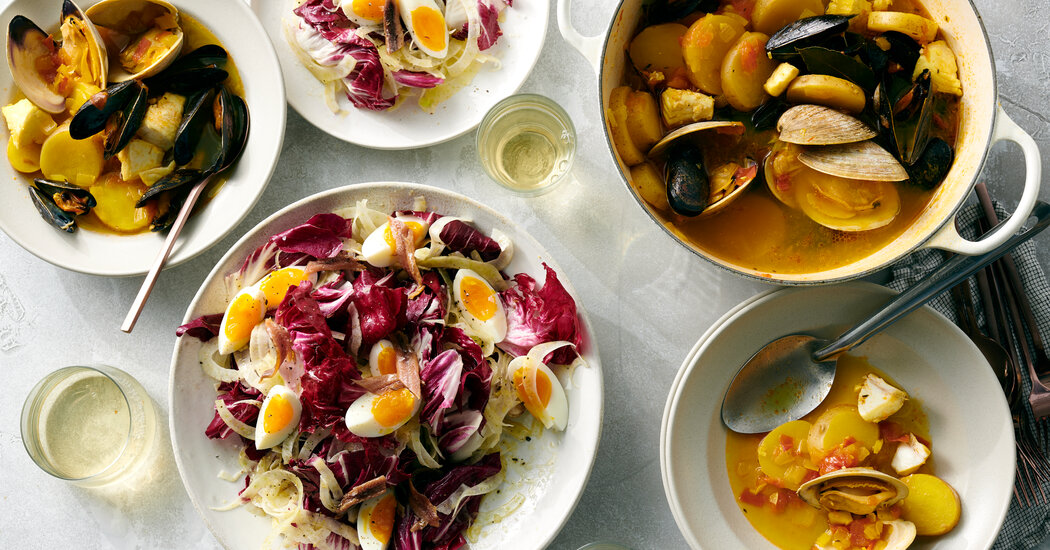
When I’m cooking at home, I usually don’t have a recipe at hand. Often, I’m cooking by feel, like confidently noodling on the piano without sheet music. But, of course, you do need practice before you can ad-lib.
This menu features dishes that can be prepared using that approach, although recipes are supplied. Many home cooks are already comfortable with customizing recipes, or using them just as a starting point. But sometimes they really aren’t necessary. Relying on memory and paying close attention to the ingredients’ attributes can get you there.
Take this fennel and radicchio salad, for instance. It’s an easy dish to riff on. Say you’ve got two fine fennel bulbs from the market and a lovely head of radicchio. Imagine the possibilities.
A simple preparation requires just seasoning the sliced fennel with salt and pepper, adding lemon juice, a little grated garlic and flavorful olive oil, then tossing with torn radicchio to coat. (You could also use curly endive or speckly Castelfranco in place of radicchio.) For a more complex version, you could make a zippy vinaigrette with lemon, garlic and oil, then add chopped anchovy (a little or a lot) and perhaps a dab of Dijon mustard, since the combo of sweet fennel and bitter radicchio pair well with an assertive dressing.
A typical fish stew, as served in the South of France, is another example of a dish you can take liberties with. No matter the selection of seafood available, the method remains the same: An onion is softened in olive oil, before saffron, garlic, thyme, a touch of tomato and a speck of hot pepper are tossed in. It then all blooms together to concentrate the flavors. Then fish stock or water is added to build a broth, and seasoned well. It should taste bright and full flavored before the fish and shellfish go in. Clams and mussels, if used, give it a layer of brininess. A good quantity of sliced Yukon Gold potatoes makes the stew more substantial (and stretches it, if you are low on fish and have extra mouths to feed). The potatoes also absorb a lot of flavor: I’d venture to say you could leave out the fish sometime and call it a potato stew.
For a final course and a refreshing dessert, a granita couldn’t be easier to make, using any kind of fruit juice you fancy. This one uses ruby red grapefruit juice and pulp, for a seasonally appropriate rendition, though any type of citrus could substitute. Taste the juice before adding sugar; you may only need a little. Chopping the frozen juice is fun and, served in glasses, the granita looks like an elegant sno-cone. I like to finish it with a few drops of orange flower water or sometimes a splash of Champagne.
All of these dishes have recipes, but if you know where you’re going, you may not need them.
Recipes: Fennel and Radicchio Salad With Anchovy and Egg | Anytime Fish and Shellfish Stew | Ruby Grapefruit Granita




